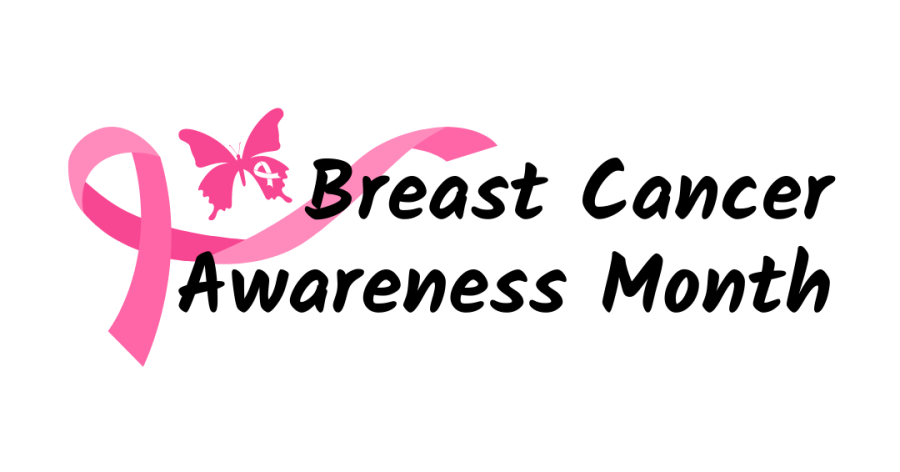Breast Cancer Awareness Month
Breast Cancer Awareness Month takes place in October every year. This month recognizes and brings awareness to those affected by Breast Cancer, whether it is through loved ones or themselves. Graphic courtesy of Agnes Kurtzhals.
October 15, 2021
Some may wonder what the pink ribbon symbolizes. It can be seen on bumper stickers, articles of clothing, checkbooks, accessories, and more. This ribbon stands for the battle against breast cancer, a fight that an estimated 255,000 women endure in the United States per year.
The entire month of Oct. is deemed National Breast Cancer Awareness Month. This month recognizes and brings awareness to those affected by Breast Cancer, whether it is through loved ones or themselves.
Reagan Praeuner, a freshman at Wayne State, has an aunt that has passed away from breast cancer. Corrine Bell, Reagan’s aunt, was diagnosed with breast cancer in her early thirties. The cancer was maintained until it came back in her forties. Reagan’s mother, Kally Praeuner, said that the most painful part was watching her sister slowly die. Corrine left behind a fourteen year old son, five brothers, and a sister who were greatly affected by her departure. She passed away at the young age of forty-six.
It is extremely important to get a breast examination when it is needed.
“I think women in particular don’t realize how prevalent it is, and how important that it is once they’re of age to get those mammograms every one to two years based on their risk,” Allison Wallick, a doctor at Midtown Health Center in Norfolk, said. “I think some people have the notion of ‘oh… this isn’t going to happen to me’ but it’s still important to stay on top of all your cancer screenings.”
Although breast cancer is more common in women, men can be susceptible to it as well. About one out of every 100 breast cancers diagnosed in the United States are found in a man.
Symptoms of breast cancer include changes in the size or shape of the breasts, pain in any area of the breasts, a new lump in the breast or underarm, and discharge from the nipple. Ways to reduce risk include maintaining a healthy weight, exercising regularly, limiting alcohol intake, and breastfeeding. Women should get an annual examination once they turn forty. Younger women can get examinations every one to three years.
Locally, the Midtown Health Center will give physical exams that include breast exams. College students are not as susceptible to breast cancer because of their young age, so the Wayne Student Health Center does not do any type of exam, but will schedule an appointment for the patient with another doctor if necessary. Both facilities will refer a patient to another doctor to get a mammogram if needed.













Patricia Washburn • Oct 17, 2021 at 10:14 am
Thank you for mentioning men. My husband, Marlyn Washburn, died of breast cancer in 2017 just five months after being diagnosed. He was an alumni of WSC. A scholarship has been established at WSC designated as the Marlyn and Patricia (Marquardt) Washburn Endowed Scholarship in order to remind everyone that MEN get breast cancer, too!! I would be happy to share photos of my “Marlyn Mobile” and Cole Gaughenbaugh at the most recent scholarship luncheon at WSC.